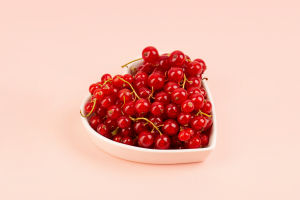Hello, Lykkers! Ever heard of dragon fruit? This exotic fruit, with its vibrant colors and unique taste, has recently gained immense popularity around the world.
However, did you know that there are several types of dragon fruit, each with its own distinct flavor, color, and health benefits?
In this guide, we'll explore the different varieties of dragon fruit, delving into their colors, taste profiles, and nutritional value. Let's dive into the captivating world of this spiky yet delicious fruit!
What is Dragon Fruit?
Dragon fruit, also known as pitaya, comes from a cactus species called Hylocereus. It has a striking appearance, a spiky outer layer, and a soft, seeded interior. Its intriguing look is matched by its impressive nutritional profile. Rich in antioxidants, vitamins, and dietary fiber, dragon fruit is more than just a treat for your taste buds—it's a healthy powerhouse too!
Here Is What Happens To Your Body When You Eat Dragon Fruit
Video by Bestie Health
Types of Dragon Fruit
Dragon fruits can be divided into several types based on their skin and flesh colors. Here's a breakdown of the main varieties you might encounter:
1. White-Fleshed Dragon Fruit (Hylocereus undatus)
Skin Color: Bright pink with green scales.
Flesh Color: White with tiny black seeds.
Taste: This variety is the most common and has a mild, slightly sweet flavor. It's crisp and juicy, similar to a pear or kiwi.
Nutritional Value: High in dietary fiber and vitamin C, making it excellent for boosting your immune system and aiding digestion.
2. Red-Fleshed Dragon Fruit (Hylocereus costaricensis)
Skin Color: Dark red or pinkish-red with green scales.
Flesh Color: Deep red or magenta.
Taste: Sweeter and juicier than its white-fleshed counterpart. It has a berry-like taste and a smooth, creamy texture.
Nutritional Value: Contains more antioxidants compared to the white-fleshed type, making it a fantastic choice for promoting skin health and reducing inflammation.
3. Yellow Dragon Fruit (Hylocereus megalanthus)
Skin Color: Bright yellow with smaller scales.
Flesh Color: White with black seeds.
Taste: The sweetest of all dragon fruit varieties, with a honey-like flavor and a crunchy texture.
Nutritional Value: Higher in vitamin C and water content, making it perfect for hydration and boosting your energy levels.
How to Eat Dragon Fruit
Eating dragon fruit is easy and fun! Simply cut it in half, scoop out the flesh with a spoon, and enjoy. You can also dice it into cubes, add it to salads, blend it into smoothies, or use it as a topping for yogurt and desserts. Its subtle sweetness makes it versatile in both sweet and savory dishes.
Health Benefits of Dragon Fruit
Each type of dragon fruit offers a range of health benefits. Here's why you should consider adding this colorful fruit to your diet:
Rich in Antioxidants: Dragon fruit is packed with antioxidants like betalains and flavonoids, which help combat oxidative stress and keep your cells healthy.
Boosts Immunity: High levels of vitamin C strengthen the immune system, helping your body ward off infections.
Promotes Digestion: Its high fiber content aids in digestion and can help prevent constipation.
Supports Heart Health: Dragon fruit can help lower bad cholesterol levels, making it heart-friendly.
Good for Skin: The antioxidants and vitamins in dragon fruit can give your skin a natural glow and reduce signs of aging.
Tips for Choosing and Storing Dragon Fruit
When selecting dragon fruit, look for vibrant skin with no blemishes. A slight give when squeezed indicates ripeness. Once ripe, it can be stored in the refrigerator for up to 5 days. If you have leftovers, freeze the flesh for smoothies or desserts later.
Dragon fruit isn't just a feast for the eyes; it's a nutritional treasure trove that can be enjoyed in various ways. Whether you're snacking on it fresh or adding it to your meals, it's a delicious and healthful choice.
So, Lykkers, the next time you see these colorful fruits at the store, give them a try. You might just discover your new favorite snack!


